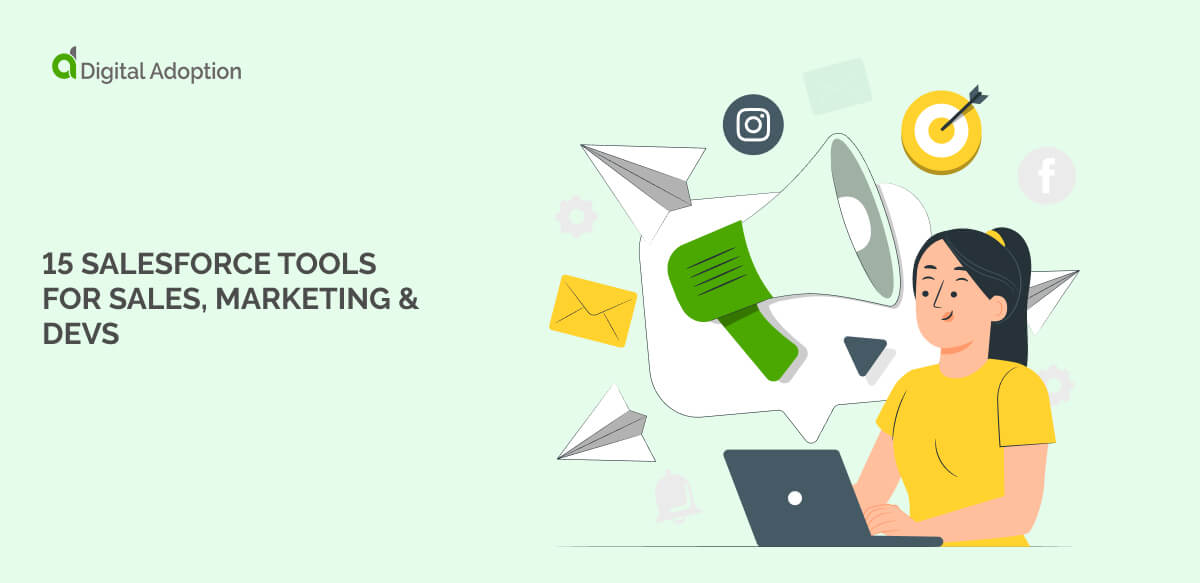Did you know that 2018 is the year of the dog in the Chinese Zodiac? And its characteristic word is “action”.
According to Adobe, it was also the year of customer experience (CX).
While that isn’t particularly unusual in itself, the importance of digital adoption in achieving CX goals should be something to pique your interest. Hopefully, this year, you were also inspired to do something about it.
Digital transformation, digitization, and digital adoption have all been prominent buzzwords in 2018.
Our 2018 digital adoption summary shows how they’ve impacted the business world this past year, and why — if you haven’t already — it’s now time to take action.
Our 2018 digital adoption summary for enterprises
These three experts have helped us to put together this 2018 digital adoption summary.
2018 prioritized digital solutions for efficiency problems
In 2018, CIOs and IT executives focused on efficiency, flexibility, and fast scalability.
Daniel Newman says, in response to this, the everything-as-a-Service phenomenon has arisen.
“With the as-a-Service industry growing, companies are becoming more sophisticated in choosing “a la carte” IT services to fit their needs.
“This ITaaS allows for scalability, the latest technology (without the latest tech price tag), shorter procurement cycles, and increased agility.”
In 2018, digital transformation gathered speed — and with it digital adoption
The IDG’s 2018 State of Digital Business Transformation reports that Big Data/analytics (58%), mobile technologies (59%), private cloud (53%), public cloud (45%) and APIs and embeddable technologies (40%) are the top five technologies already implemented.
With the rapid penetration of digital technologies has also come the need for a strategic approach to digital adoption.
Introducing new technology into a business is not the same as it being adopted. Rephael Sweary says: “[digitization] efforts are in vain if your employees don’t adequately engage and adopt these technologies.”
“What’s clear is that providing a great digital employee experience leads to a better customer experience, particularly for roles such as contact centers, or other customer-facing jobs.”
2018 saw the growth of data, machine learning, AI and IoT
Daniel Newman reports that, “we have created 90% of the world’s data in the past year [and] research is also showing that we are only using 1% of the data effectively.”
But the 1% are using it to facilitate machine learning and develop AI. Salesforce is one company that is leading the way in terms of data being used to create genuinely meaningful business insights.
WalkMe is another. A pioneer of the Digital Adoption Platform, WalkMe’s customers benefit from adoption analytics. Training professionals, CIOs, or change managers can see at a glance who is getting stuck using a system — and at what point.
AI transformed multiple industries in 2018. Rephael Sweary reports believes this is far from over: “if there’s one technology that will continue to dominate this year on into 2019, it’s AI.
“Whether it’s personal virtual assistants in healthcare or fraud detection systems in banking, there are a multitude of applications that AI is upending.”
2018 was the year of the customer experience
Adobe’s 2018 Digital Trends report found that this year’s big focus for businesses was customer experience (CX). Digital adoption trends like personalization, AI, and cloud-based technology play an important role in improving CX.
Walmart is one company prioritizing digital adoption to improve the customer experience. Lauren Desegur at WalmartLabs explains: “We’re essentially creating a bridge where we are enhancing the shopping experience through machine learning.
“We want to make sure there is a seamless experience between what customers do online and what they do in our stores.”
With more digital transformation journeys, metrics-oriented businesses, and greater adoption of AI and analytics, 2018 saw strategic digital adoption become a primary focus for enterprises prioritizing the customer experience.
And this is set to continue well into 2019 and beyond.
In 2018, AR began to be adopted by enterprises
“AR has found tons of use cases in enterprise workforce training, meaning it’s not just cool, it’s useful. And that’s what technology is all about,” says Daniel Newman.
In 2018, AR has been used in medical training, maintenance and engineering, and even business logistics.
Shipping company DHL, for example, implemented smart AR glasses in some of its warehouses. Lenses display to workers the shortest route within the warehouse to locate an item that needs to be shipped.
Final words
This 2018 digital adoption summary shows how critical it is to take an adoption focused approach to any new technology implementation.
Experts agree that the need for digital transformation is not going to go away. With that in mind, digital adoption needs to be a focus if not now, then soon.







![18 Examples of AI in Finance [2025]](https://www.digital-adoption.com/wp-content/uploads/2025/06/18-Examples-of-AI-in-Finance-2025-300x146.jpg)
![14 Examples of AI in Manufacturing [2025]](https://www.digital-adoption.com/wp-content/uploads/2025/06/14-Examples-of-AI-in-Manufacturing-2025-300x146.jpg)




